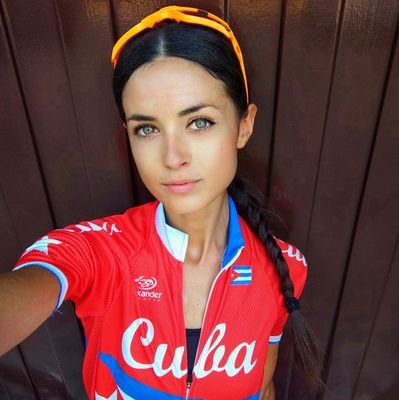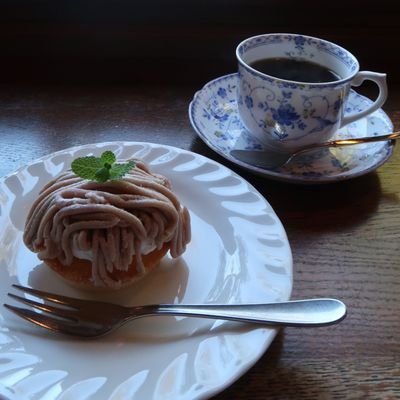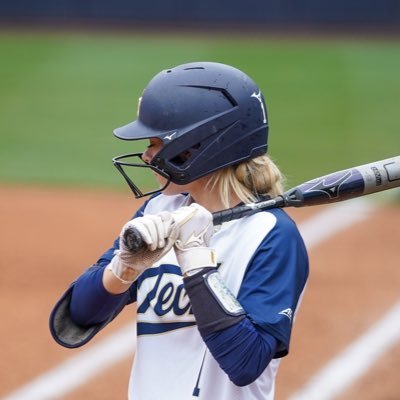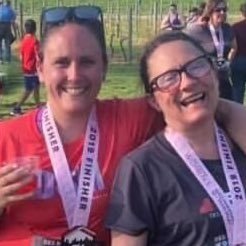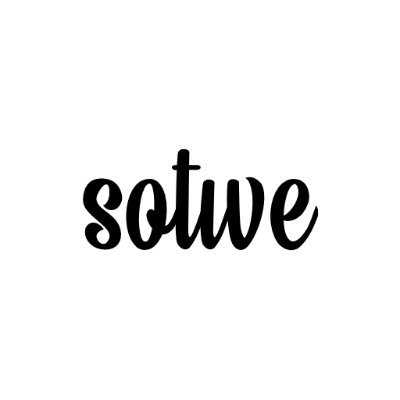
Rasmus Bjørn
@OsoDanes
Followers
1,238
Following
393
Media
424
Statuses
2,313
The prehistoric loanword guy @MPI_GEA Protects early borrowings from accusations of 'chance similarity' and generally struggles with a difficult methodology.
Jyderup (DK) / Jena (DE)
Joined November 2010
Don't wanna be here?
Send us removal request.
Explore trending content on Musk Viewer
JIN IS COMING
• 315563 Tweets
Columbus
• 286932 Tweets
HAPPY IS COMING
• 220605 Tweets
Indigenous
• 217098 Tweets
Nobel
• 204834 Tweets
Bill Clinton
• 130761 Tweets
Khaled
• 111470 Tweets
Thanksgiving
• 83877 Tweets
Bret
• 44463 Tweets
Hakan
• 38178 Tweets
Leire
• 36309 Tweets
Kerem
• 33747 Tweets
#BizimÇocuklar
• 26666 Tweets
Amaia
• 23732 Tweets
Geraldo
• 22589 Tweets
GALA TU PATRONA
• 21655 Tweets
#BBUK
• 21356 Tweets
National Grid
• 19006 Tweets
Belgique
• 18263 Tweets
İzlanda
• 13810 Tweets
#BELFRA
• 13392 Tweets
Kenan
• 12094 Tweets
Saliba
• 11159 Tweets
Arda Güler
• 10541 Tweets
Zeki
• 10105 Tweets
Last Seen Profiles
Pinned Tweet
7️⃣🤩My fav hypothesis:
#seven
is
#neolithic
and
#bronzeage
#wanderwort
#provemewrong
#yesImadeatshirt
6
5
34
Congratulations on the publication of the most stupendous database! But such a pity that Indo-European archaeolinguistic efforts will have to suffer from another confused and half-baked map making the rounds. This Indo-Iranic spread means nothing and explains nothing, while in...
New hybrid hypothesis for the origin and spread of the Indo-European
#languages
. New study in
@ScienceMagazine
by an intl. research team of linguists and geneticists led by
@MPI_EVA_Leipzig
. See: &
5
159
421
8
14
175
Shots fired -- Elamo-Dravidian and Indus Valley
💥🇮🇳❤️🔥
@bahatanadi1
(interdisciplinary collaboration, yes, please!)
11
18
136
Late Indo-European innovations
@ThorsoRasmus
@KroonenGuus
@2lander
Is this a fair representation of a working hypothesis? Or do you have suggestions? I could be persuaded to cram Gr.+Alb. closer to the Caucasus still.
18
17
137
Life goal achieved:
Walking across a strip of Eurasian steppe alongside David Anthony discussing the horse domestication process 🐎
#archaeolinguistics
#triangulation
#eurasiaconnected
View from a kurgan on the Pannonian Plain
14
4
79
*shameless self-promotion*
A lot of sleep lost to this baby!
#bronzeage
#Eurasia
#indoeuropean
#uralic
#turkic
#chinese
#triangulation
#loanwords
Primary take-aways🧵
3
14
72
Great discoveries ahead!
🪙
The more we learn about the economies and techniques of the Bronze Age forest-steppe interface, the more we can contextualize the rich linguistic record.
Here the rate of tin in bronze alloys across Seima-Turbino sites
@Miljanicious
📲 F. Fricke
4
6
63
Dissenting views of
#IndoEuropean
at the
#UCPH
these last two days.
Archaeologists Kristian Kristiansen and Rune Iversen with their appreciation of consensus
Heggarty proposing a completely different model, still short of answers to basic ling. problems.
Good times 🤓🍻🗣️💬
5
7
67
A potential Neolithic wonder Wanderwort! 🐄🐄🐄🐄
4
6
62
The PIE word for horse. From an
#archaeolinguistics
pov, this is not a fully domesticated (presumably ridden) horse. After the dom. event (2K BC) it spread to SW Asia w/Arm., and possibly to PTurkic *(h)at w/Old Steppe Iranic *ætswæ.
2
7
62
Pieces of the Uralic puzzle coming together nicely. Fits the linguistic evidence of deep roots with Palaeo-Siberian and first encounters with IE in the Afanasievo-Okunevo transition. Excited to explore these dynamics further (Zeng et al., call me 😉) 🗣️🧪7⃣
3
7
54
Historical linguists of the Sahel and the Horn, what are the earliest words for sorghum, pearl millet, and finger millet? I wonder if there is a linguistic trail from this interaction sphere
3
4
49
Curious about the ancient spread of domesticated plants in Central Asia? Then let the leading experts in the field (
@robertnspengler
,
@GiedreMotuzaite
,
@Rita_DalMar
,
@basira_mir
, etc.) give you an update (with me as the historical linguistic sore thumb) 🍑🧩🌏🍚💬🔬🦠
5
21
47
Borrowed rice words 🍚🌾💬
#triangulation
#wordhistories
Here Nohara's abstract, and part of the journey of our very own
#rice
word from my dissertation
#EurasiaConnected
1
13
39
#Folketymology
and the modern etymologist - a pet-peeve of mine, and a fundamental principle to grapple with when entering discussions of potential prehistoric loanword relations
3
6
38
Absolutely smashing preliminary schedule for the September
#IGFT
in Basel! 💥
- focus on contextualization much appreciated
- leading experts are showing up in full force.
Anyone interested in the dynamics of Bronze Age Eurasia, take note!
#triangulation
#indoeuropean
🐎🐄
2
9
36
Eternally grateful to
@bnuyaminim
for going over the Semitic evidence in my recent article on early impulses between SW Asia and Proto-Indo-European
It underscores the need for more collaborative work - hypothesis still stands
6
4
32
Horses into East Asia? Yes, please!
Iranic source of the Old Chinese horse, mid- to late 2nd mil. BC
Plausible that Proto-Turkic *(h)at was borrowed earlier still from Old Steppe Iranic *(h1)ætswæ
Exciting times, indeed!
Exciting times: our
@ERC_Research
SyG Horsepower project gets a webpage on the
@britishmuseum
website! See
for more
1
19
65
1
5
29
This is positively among the weirdest word salads ever concocted 🥗 And yet the "expert linguist" here claims that Elamite, Etruscan, and Thracian are Turkish (sic!) languages 🤯
@OsoDanes
@ogzzby
@orientalismus
@Ricardo_Cd_Oliv
@PIE_Animals
Marcantonio argues that the great majority of the conventionally stated IE sound laws lack statistical significance and that, therefore, most of the conventionally established correspondences are simply similarities, most probably in the given sense of ‘chance resemblances’.
2
0
1
11
2
31
@bahatanadi1
Fascinating stuff. Now, someone, go do that Dravidian comparative grammar and etymological dictionary
3
3
28
Attention, everyone. It has come to my attention that cultural history is a strictly internal process. Thanks to the geniousness of this method, I can state for a fact that Danish was spoken in SW Asia 1000 BC - the Danish Bible clearly mentions events from that region…
7
1
29
Are you also having a hard time weighing linguistic evidence in prehistory?
Help is on the way!
A very welcome update to the methodological toolbox from one our great scholars
@CarlingGerd
🐂🙌🏼📘🐎🐑🪙🌱💬
0
3
27
Millet celebrations galore! 🥳Foxtail millet one of many domesticated crops and animals to refract the dispersing Indo-Iranic languages in the second millennium BC.
#YearofMillets
🌱
The
@FAO
declared 2023 as the year to celebrate millets. Pictured are colorful millets from the Gorden Hillman collection
@UCLarchaeology
& carbonized millets I recovered from 13th-century deposits in Barda, Azerbaijan.
#Archaeobtany
#archaeology
#Millets
#argriculture
#Food
5
19
48
2
3
22
Just setting the stage for my upcoming article on linguistic interaction in Bronze & Iron Age Central Asia. Green=fairly certain; Yellow=debated; Red=Who knows?
#uralic
#indoeuropean
#turkic
#Chinese
2
1
22
@ArainGang
Whatever fits the linguistic data. Iranic horse words were borrowed into Europe and China. Why did Iranic and Indic independently borrow eerily similar wheat words, while maintain a shared word for barley?
2
1
23
An attempt to summarise the Indo-European homeland debate as it stands in 2021. We're learning a lot and get to pose new exciting questions. With
@rgoatcabin
This week's video is a fascinating debate by our very own
@OsoDanes
and R. Tegethoff, titled:
"Indo-European - The Homeland Debate Anno 2021"
Please share far and wide, and tune in soon for more fascinating and instructive content!!!
Link:
0
9
16
0
2
21
POV: getting up at 1 AM to learn about Central Asian Bronze Age dynamics with Michael Frachetti and
@Miljanicious
- pastoralism, agriculture, metallurgy 🇯🇵🐄🌱🐏🪙
2
0
21
1000 followers!
Tusind tak 🔟0⃣0⃣!
Here follows borrowed thousands from across the globe (from
@haspelmath
& Tadmor 2009) please add more
Swahili elfu ← Arabic
Tarifiyt ařəf ← Arabic
Selici Romani ezeri ← Hungarian ← Iranic
Lower Sorbian towzynt ← German
...
2
2
22
Loanwords are telltale signs of contacts between different speech communities. Why does Proto-Uralic have early Indo-European words? ()
But there are similar immutable similarities with Semitic and wider Afro-Asiatic that have played a lesser role.
*shameless self-promotion*
A lot of sleep lost to this baby!
#bronzeage
#Eurasia
#indoeuropean
#uralic
#turkic
#chinese
#triangulation
#loanwords
Primary take-aways🧵
3
14
72
1
2
19
Very exciting new paper on early horse riding - potential insights to the lead-up to the decisive Sintashta event 2000 BC (Librado et al. 2021). Impressions,
@wtt_taylor
?
1
6
19
The tutorial is on!
#Neolithic
and
#BronzeAge
archaeolinguist interfaces in Eastern Eurasia. We’re off to a flying start with my always brilliant colleague Bingcong Deng on contacts between
#SinoTibetan
and
#Transeurasian
🗣🔬🌏🧬
1
2
20
On Wednesday I got to present my Work in Progress to wonderful colleagues at the archaeology department at
@MPI_SHH
- now off to CPH to see
@mattitiahu
’s talk 🥂before returning to the fam 🥰 thanks to
@rgoatcabin
for capturing my enthusiasm 🤓
1
0
20
Historical linguistics *never* sleeps 👀💬🔬
1
0
18
Geneticists go with the Armenian homeland! Now, I'm curious to see the linguistic evidence for the association. Several other famous takeaways we will get to fit into the linguistic chronologies at
#IGAT2022
1
0
18
The gradual expansion of the (grammatical) numeral system appears to mirror the increase in complex relations between language groups.
To me one of the most tantalizing insights from historical linguistics (at least in the Eurasian space).
🔢7⃣🔟💯🤯🤝
0
1
19
I concur - numerals can be used as a proxy of societal complexity. It's a grammaticalization process of previous ad hoc quantifiers that become fixed as the need to refer to succinct quantities between different groups rise.
2
0
18
@archeohistories
Fascinating horses, but where do you get the 5000 BC date from? The modern horse was domesticated only 2000 BC, which I presume the Ahal Teke horses also must conform to
2
1
17
@thomas_wier
's Weekly Georgian Etymology is probably my favorite part of Twitter. Start with the uncontroversial attestations, and work your way back through contacts and potential ultimate sources. 💬👌🐑🏔️ Pure gold! (please don't kill Twitter)
1
3
17
An important 🧩 of the prehistoric puzzle is the shared non-inherited vocabulary for various types of millet. Here the South Asian signal for sawa millet 🌏🌱
#yearofmillet
#triangulation
#historicallinguistics
1
2
16
Gamkrelidze-Ivanov and Dolgopolsky famously provided lists to support a SW Asian homeland of Proto-Indo-European. The hypothesis is not favored among IE linguists, although non-experts appear swayed by arguments based on genetics and Bayesian analyses ().
1
3
15
This is *exactly* what the study of the human past needs, too, and fortunately how researchers aim to organize: Roots of Europe (Copenhagen), the MPI of Human History (Jena), and the Center for the Study of the Human Past (Uppsala)
#triangulation
#interdisciplinary
As Danish research is reduced to writing »bullshit documents« with no real impact, activists Ole Wæver and Maria Toft say they have an answer: A new Nordic research movement with the space for a more playful, experimental research.
@MariaToft
@ole_waever
1
3
7
1
1
16
#SAA2023Portland
is pumping! The Shamanka site at the Baikal may show signs of interactions between local HG groups with immigrant
#BronzeAge
pastoralists (
@BaikalAP
@Angela_Lieverse
), new exciting work on
#CentralAsia
#metallurgy
by
@marianalfcastro
0
5
13
@ait_kisou
Thanks 🙏🏼 he may have missed that I explicitly base this hypothesis on the items *not* transferring directly between PIE and PS, but regardless, the updated Semitic state of affairs is pure gold and will enter the database directly. Keep the comments flowing 💪🏼
0
0
14
@yajnadevam
@ArainGang
Uhm, tea was novel when the word was adopted. That’s kinda the key to cultural spreads. It’s beiNg suggested that farmers spreading with wheat would borrow a word for wheat. Not saying it’s impossible, but something to explain. Cult. bor. is not a blank check.
1
0
13
A new baseline for discussing one of the most contentious issues in historical linguistics: Altaic/Transeurasian, i.e. the origin of the Turkic, Mongolic, Tungusic, Koreanic, and Japonic. Congratulations
@BarbarianNiche
@jlu_ningchao
and Martine Robbeets 🎇
Several years in the making, it is great to have our
@Nature
Transeurasian paper finally published! A short thread on some implications for Japanese archaeology: (1) Jomon genomes were not limited to Japan or areas with Jomon pottery.
4
36
114
1
0
12
Two seemingly different but simultaneously correct etymologies at once - a borrowing and a native word. This is such a profound insight, very pertinent to my work on prehistoric contacts.
#folketymology
and nativization are incessant forces 💬🤷🏼♂️💡
0
0
12
@avzaagzonunaada
Big question in IE remains when and where the word came from.
@ThorsoRasmus
and
@KroonenGuus
have pointed to signs of a foreign provenance of all goats, whereas sheep have a stronger PIE pedigree. Likely a steppe vs. altitude phenomenon.
1
1
13
The spread of millets out of East Asia. I have 27 pages on millet words in my dissertation, but still a bewildering assemblage of non-native Central Asian forms without an obvious East Asian source. Directionality seems to fit Tib.-Burm. in Majiayao from Sin.Tib. in Yangshao
Our paper on ancient cultivation in north-central Asia is now out! Thanks to all of the colleagues who worked on this paper - especially Patrick
@palaeotropics
and the
@MPI_GEA
(MPI-SHH) crew.
2
41
140
0
0
12
An incredibly inspiring group of people to be around as an
#archaeolinguist
with an interest in prehistoric
#CentralAsia
. New pieces to the puzzle, new contacts, and just an overall good time - thanks
@Rita_DalMar
!
💬🔬🌏🧩🍑
What a wonderful week for our Ancient Mobile and Sedentary Interactions in Inner Asia roundtables, thank you all who joined and contributed to the discussions! A special thank to Sören Stark, Barbara Cerasetti,
@GiedreMotuzaite
and Kai Kainuth for their fantastic presentations!
0
6
28
0
1
12
#SAA2023Portland
in full session - Dorian Q. Fuller as always with profound takes on early domestication processes, Frank Winchell on the
#Butana
origins of
#sorghum
, and now our (
@MPI_GEA
) very own
@yoshi_maezumi
on Amazonian indigenous land use
0
0
11
Another important piece ! 🧩
(P)Indo-European ↔️ NW Caucasian in the Bronze Age
Considering the strong propensity for silver words to wander, I'd wager that
@avzaagzonunaada
is on to something.
1
0
12






